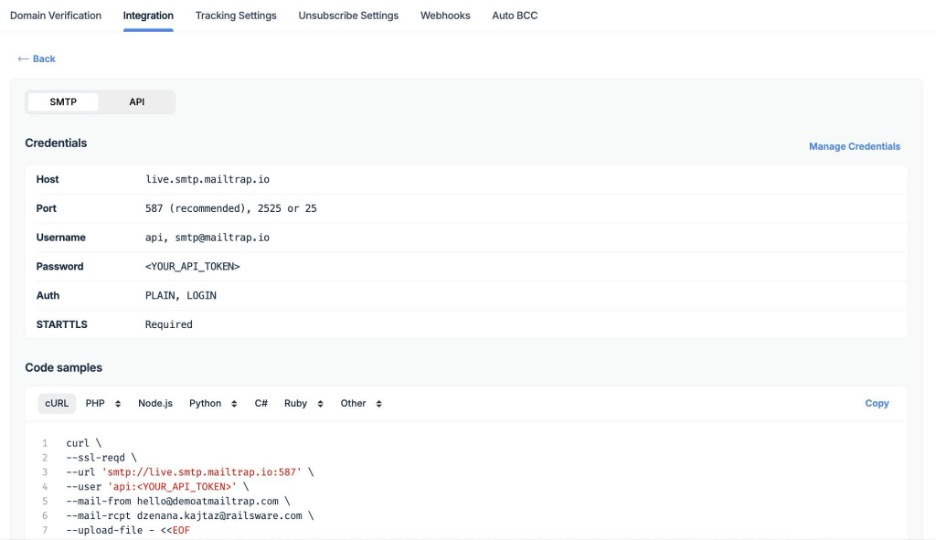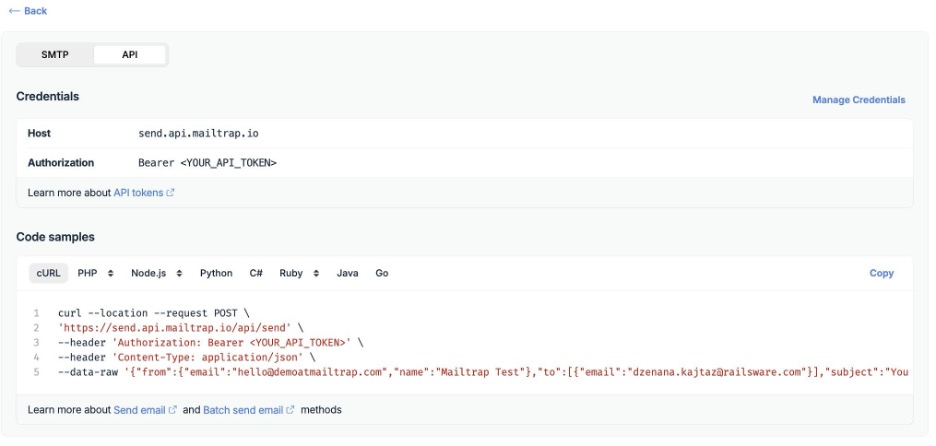If I know one thing for a fact, it’s that the more emails you send, the messier things get. Different types, different goals, and boom, your deliverability starts to suffer.
Thankfully, some early email specialist figured this out a long time ago and came up with the concept of IP pools – the smart way to keep different types of email traffic in their own lanes so things don’t break as sending grows.
In this article, I’ll walk you through what email IP pools are, why they matter, and when to implement them. I’ll also dissect what might be causing poor deliverability in your IP pool, as well as what you can do to get things back on track.
What are email IP pools?
An IP pool is a group of IP addresses assigned to specific email streams – categories of emails that serve a similar purpose, like marketing campaigns, transactional messages, or user alerts – with the goal of creating stream isolation.
This isolation helps ensure that one stream’s issues, like low engagement or high bounce rates, don’t drag down the deliverability of another stream, as each one comes with different sending patterns and recipient behaviors.
Depending on the email sending provider (ESP), email pools can be created for a range of different purposes, including:
- Separating transactional and marketing emails
Transactional and marketing emails behave in distinct ways and carry unique deliverability risks. So, using separate IP pools (and ideally separate domains/subdomains) for each stream ensures mission-critical emails, like password resets or billing receipts, land in inboxes consistently, even if a sender’s latest promo takes a hit.
- Managing high volumes
Sending a large volume of emails from a single IP can lead to delays and throttling. With IP pools, you can spread the load across multiple addresses to avoid volume spikes, reduce bottlenecks, and keep the email flow smooth, even during heavy send periods.
- Isolating client traffic
If you’re managing email for multiple clients (such as in a marketing agency or as a reseller offering email services), you don’t want one client’s issues dragging down everyone else’s. IP pools let you assign a dedicated sending infrastructure per client, so you can isolate performance, monitor reputation, and troubleshoot without cross-contamination. This kind of setup essentially mirrors multi-tenancy in email sending, where each client gets their own sending space, protected from the deliverability risks of others.
- Grouping by sending reputation
When onboarding new senders, their reputation might be unclear. With IP pools, providers can isolate senders into streams such as “New”, “Trusted”, and “Needs Attention”, based on what they know (or don’t). This helps shield the cleanest IPs from risk, while still giving new senders a place to build trust.
Disclaimer: Before you get too deep into how IPs are grouped and managed, keep in mind that this breakdown reflects how email service providers typically structure IP pools behind the scenes. As a sender, your reasons for needing IP pools might be different, and we’ll cover those next. Still, it’s helpful to understand how things work in the backend so you can make smarter decisions when choosing an ESP or planning your sending setup.
For instance, Mailtrap users can take advantage of separate IP pools to create transactional and bulk email streams. This ensures that high-urgency messages, like login confirmations or billing notices, reach inboxes quickly and without interference, while newsletters and promotional campaigns can be optimized and managed independently. Both reach recipients, just with delivery strategies tailored to each message’s purpose.
Why use email IP pools
Okay, so I’ve covered the reasons ESPs implement separate IP pools.
Now, it’s time to tell you why you, as a sender, might want to start using them. And no, this won’t be a comparison between shared vs dedicated IPs, as there already is a separate article on that topic on the Mailtrap blog.
Instead, I’ll focus on the practical side of IP pools – how they help isolate risk, optimize delivery, and gain control as your email sending grows.
Reason #1 – To improve email deliverability
When you use the same IP to send all of your emails, the underperformance of one campaign is very likely to hurt all of your other messages as well.
So, say you sent a marketing campaign and it got low engagement. If you now use the same stream to send your password reset or billing alert emails, chances are the low engagement of the marketing campaign will stop the inboxing of your high-importance communication.
That’s because mailbox providers evaluate sender reputation at the IP level, not just per message. And with Gmail, Yahoo, and Outlook rolling out stricter protections against spam as well as new requirements for high-volume senders, keeping streams isolated is more important than ever.
Beyond isolation, IP pools promote consistency, something mailbox providers reward. You see, by using IP pools, you can assign high-engagement messages their own IPs while having completely separate IPs for newer or more volatile campaigns. This way, your best-performing traffic builds reputation quickly, while riskier sends are contained and monitored without threatening overall deliverability.
Reason #2 – To manage sender reputation
As mentioned a few paragraphs ago, sender reputation lives and dies at the IP level. And when you’re sending different types of emails to different audiences, lumping everything together under one IP complicates how ISPs determine this reputation.
With IP pools, you can give each stream its own space to build a reputation that reflects its actual performance. And if things go wrong, and maybe engagement dips or complaints happen, each stream is isolated in its own IP pool, and the damage doesn’t spill over. Think of it as risk management for your sender reputation, and IP pools as your safety net.
IP pools also give you more hands-on control over how sender reputation is maintained, as they allow you to apply stream-specific practices, like setting tighter bounce thresholds for re-engagement campaigns, or enabling closer monitoring for riskier sends like last-minute promotional blasts.
Reason #3 – To support high-volume and scalable sending
ISP throttling, delays, and rejections can all be results of sending high volumes through a single IP. With IP pools, email load can be spread across addresses, reducing bottlenecks, even during peak periods. This distribution of traffic also works great for staying under ISP volume thresholds and not exceeding any daily or hourly per IP caps.
Now, in terms of scaling, IP pools prove especially useful as they allow you to add and warm up IPs in a controlled manner within pools. So, if one IP fails or gets temporarily blocked, other IPs in the pool can take over, thus maintaining performance and adding resiliency.
Lastly, for use cases involving fine-tuned delivery behavior, such as rate limiting, custom retry rules, or timing controls, IP pools serve as an ideal mechanism to enforce stream-specific configurations and thus optimize for urgency, user experience, or mailbox provider preference.
When to use email IP pools
So, you know what IP pools are and why you need them. But what are the situations when you actually should leverage them?
Here are the key scenarios where IP pools become your strongest line of defense for deliverability:
You’re sending high volumes
If you consistently send large volumes of email, especially into the hundreds of thousands per day, using a single IP can lead to delays, rate limits, or poor inbox placement. Also, as ISPs tend to flag unusually high-volume traffic from a single source as suspicious, switching to IP pools to distribute volume more evenly is the way to go if you want to stay under the ISP radar.
Looking ahead, if you’re a new business that has plans to send massive, diverse campaigns, having IP pools set up should be the first step to take if you want to enable concurrent sending across multiple IPs, increase your throughput, and improve load balancing.
When it comes to bulk senders whose IP has already shown signs of throttling, soft bounces, or erratic performance, this behavior should be a clear indicator that it’s time to switch to using IP pools, as any of the mentioned things often mean your current IP is straining under the load.
You’re sending multiple types of emails
As most businesses usually send a mix of transactional, marketing, as well as other message types, and can observe their varying complaint risks and engagement patterns, using IP pools is recommended in order to give each its own stream.
IP pools also provide you with more flexibility to use different strategies or SLAs for each stream. So, if, for example, you need 30-second delivery for login codes or maybe want to pace out a re-engagement campaign and not your other messages, this level of control can be applied thanks to the IP pool architecture.
You’re introducing a new email stream
If they have been established for a while, your existing transactional or marketing streams likely have solid reputations. A new stream, however, can carry unknown risks, such as different content, untested audiences, or experimental strategies.
By assigning this new stream a dedicated IP pool, you can ensure that any hiccups won’t affect your existing infrastructure. This means you’ll essentially be creating a sandbox environment for testing the new stream setup, all while protecting your core IP reputation and not jeopardizing inboxing.
And if the new stream requires a gradual warm-up, the same approach will work as the multi-IP pool infrastructure gives you space to complete the process properly, with low, steady volume that builds trust.
How to use email IP pools
Management of IP addresses significantly varies from ESP to ESP. But what most reputable ones have in common is that they don’t give you direct control. Instead, they let you create streams or subuser accounts to segment traffic, which are then internally mapped to specific IPs or pools.
Mailtrap applies the stream-based approach in order to give users a strategic way of leveraging the platform’s IP pool infrastructure.
And here’s how you can create separate email streams within Mailtrap:
- Verify your domain
Under the Sending Domains tab, click on Add Domain and enter your details in the input field.

Next, you should be taken to the domain verification page, where you’ll find the DNS records that need to be given to your domain provider.
For more details on this step, check out the sending domain setup guide.
- Integrate the Mailtrap stream you want to use
Depending on your use case, transactional or marketing, select the corresponding stream option from the Integration tab.

Then, for sending via SMTP, copy the credentials, such as the host, port, username, and password, and paste them into your project, app, email-sending service, or any platform that supports the protocol.
Alternatively, you can pick a programming language or framework from the menu under “Code Samples” and copy the sample configuration already containing your credentials.

For sending via API, toggle the switch to API, build the authenticated HTTP request in your programming language or framework of choice, and configure it with the Mailtrap host and API token.
Just like the SMTP route, this one will also give you the option to choose a programming language or framework from the menu under “Code Samples” and copy a configuration with your credentials integrated.
Under the same tab, another thing you should see is the official SDKs for PHP, Python, Ruby, and Node.js, which can simplify integration and accelerate setup. So, if you’re working within a supported tech stack, be sure to take advantage.

Once you’ve completed these two steps, your new email stream should be ready to send at scale with high deliverability.
Also, thanks to detailed analytics being just a click away, with Mailtrap, you’ll always know how your email streams are doing and where there’s room to improve.
When your IP pool might be causing poor deliverability
While it’s true that deliverability issues often stem from factors like poor email list hygiene and spammy content, sometimes the culprit is structural.
So, let’s talk about some common ways your IP pool setup might be working against you.
Different types of emails are sent from the same pool
As I covered earlier, many providers won’t ever clearly disclose how they handle stream-level IP isolation. This means that even if you’ve set up distinct “streams” or “categories” in the UI, those may still be bundled together under the same IP pool behind the scenes, all in the name of resource optimization.
The problem? Well, say your IP pool sends both high-engagement password reset emails and bulk marketing blasts that flop. To a mailbox provider like Gmail, it all simply looks like inconsistent engagement from a single source. This, of course, can lead to consequences like throttling, filtering, or even spam placement for your most critical emails. But worst of all, it can completely defeat the purpose of using (and paying for) IP pools in the first place.
The IP pool wasn’t properly warmed up
With automation at their disposal, and IP assignment being a tedious task, many providers prioritize speed, automatically assigning IPs to accelerate setup. However, without proper warm-up routines, your emails may be sent from cold IPs that haven’t yet earned trust with mailbox providers, hurting deliverability from the very start.
To top it off, ESPs might also skip engagement-based warming, failing to prioritize the most active subscribers first.
As a result, your IPs may struggle to maintain a strong reputation, and even with solid content and a clean recipient list, you could face throttling, soft bounces, or frustrating delivery delays – all problems that could’ve been avoided with a better warm-up process.
The IP pool was oversegmented
Although it’s tempting to go granular – one pool for every stream, client, or campaign – overdoing segmentation can also create its own issues.
You see, when providers underutilize IPs by sending only a few thousand messages per month, those IPs can’t generate enough volume to build a strong reputation. And if your sending is spread across too many IPs, it not only drives up costs but also stretches resources thin, making it harder to monitor performance and detect deliverability issues.
Your role in managing IP pool performance
Sure, your provider manages the IP infrastructure, but that doesn’t mean you can be completely hands-off. As a sender, your actions still play a critical role in maintaining strong deliverability and overall performance.
To get the most out of your IP pools and safeguard your reputation, here are some proactive steps you can take:
- Understand your provider’s setup. Ask if transactional and marketing streams are routed through separate IPs. If not, see if there’s an option to separate them.
- Monitor your metrics closely. Look out for sudden drops in open rates, spikes in soft bounces, or previously reliable emails landing in spam. These may signal IP-level issues.
- Check your sending practices. Make sure your lists are clean, engagement is steady, and new campaigns follow warming best practices. If you’re doing everything right and still seeing problems, your IP pool might be the issue.
- Talk to your ESP. If you suspect you’re in a poor-performing pool or that your transactional emails are suffering due to other traffic, contact support. A good provider will investigate and may reassign your traffic, adjust your stream configuration, or warm up a new IP.
Wrapping up
And that concludes this deep dive (pun intended) into email IP pools.
As a final tip, I want to remind you that even if your dashboard shows separate streams, it’s your provider’s responsibility to ensure those streams don’t end up sharing the same IP behind the scenes.
At Mailtrap, we take that task seriously, implementing isolation at the email infrastructure level to make sure your delivery logic stays intact and your emails land where they should – in the inbox.
If you’re ready to put it into practice, click below to get started with Mailtrap.
If you want to do more reading on email deliverability, here are some other articles you should check out:






